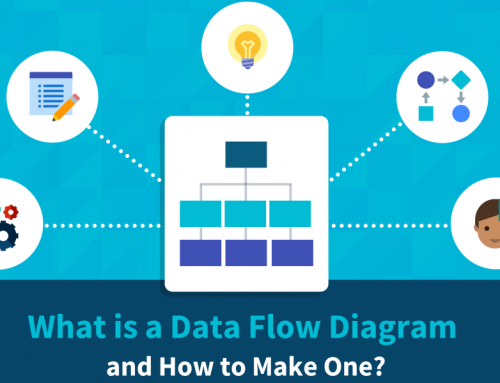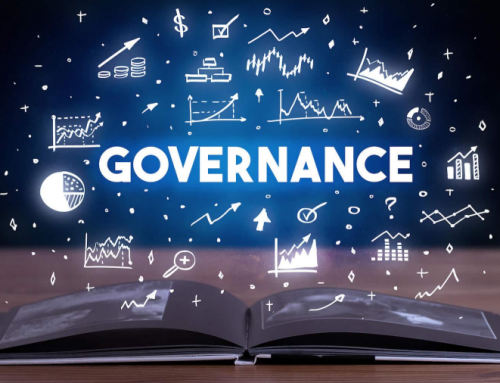6 Challenges Facing Enterprise Data Governance!
For enterprises, different industries, different business characteristics, and different levels of informatization also indicate different challenges in the process of data governance. However, the common problems and challenges of enterprise data governance mainly include the following six aspects:

Challenges Facing Enterprise Data Governance
Challenges Facing Enterprise Data Governance – 1. Insufficient Understanding of the Business Value of Data Governance
“Why is data important?”, “What problems can data governance solve?”, “What value can data governance achieve?” These are the three major questions that plague enterprise data governance and are often questioned by corporate leaders and business departments.
Because traditional data governance is technology-oriented, it pays attention to the standards of the underlying data and the specification of the operation process. Although technology-driven data governance can also reveal data deficiencies and improve data quality, management and business personnel seem not satisfied with this.
As the traditional technology-driven data governance model does not start from solving the practical business problems, enterprises generally have insufficient understanding of the business value of data governance. To quickly realize the value of data and results, the most direct way is to the business value as the guidance, from the enterprise actual face data application needs and pain points, for meet the demand of management and business data in order to realize the business value of data, solve specific pain points and difficulties of data driven to push the management work.
As described above, the business value of enterprise data governance is mainly reflected in: reducing costs, improving efficiency, improving quality, controlling risks, enhancing security, and improving decision-making. Different enterprises have different business needs and data problems, and the business value of enterprise data governance does not require all of the above six aspects.
Enterprises should quantify the business value of data governance from the needs of management and business pain points, so as to enhance the cognition and confidence of enterprise management and business personnel in data governance.
The best way to understand a business pain point caused by data is to ask and observe. The management of data governance must focus on business needs, and often needs to focus on solving some level of pain that business people feel or problems that they cannot solve.
Challenges Facing Enterprise Data Governance – 2. Lack of Top-level Design for Enterprise-level Data Governance
At present, enterprises generally recognize the importance of data, and many enterprises have also begun to explore data governance. We have seen that a large number of data governance activities of enterprises are currently at the project level and department level, lacking the top-level design of enterprise-level data governance and the overall coordination of data governance work and resources.
Data governance involves business sorting, standard formulation, business process optimization, data monitoring, data integration and fusion, etc. It is highly complex, exploratory, and lacks top-level design guidance. Deviations or deviations occur in the governance process. The probability of mistakes is relatively large, and if it cannot be corrected in time, its sexual impact will be difficult to estimate.
The top-level design of data governance belongs to the strategy at the strategic level, which focuses on the overall, global and systematic. The top-level design of data governance focuses on the overall situation. Data governance is designed from a global perspective, breaking through the limitations of single-project-based governance, promoting the collaboration of various business links in the enterprise owner’s value chain, and top-down overall planning.
The top-level design of data governance focuses on the system, from organizational departments, post settings (user permissions), process optimization, management methods, and technical tools to build the organizational system, management system and technical system of enterprise data governance.
The top-level design of enterprise data governance should stand on the height of enterprise strategy, take the overall consideration of all aspects, levels and elements involved from a global perspective, coordinate all kinds of resources and relationships, determine the goal of data governance and formulate the correct strategy and path for it.
Top-level design mainly focuses on key issues, core issues that have long led to various contradictions, and major issues that seriously affect the healthy and stable development of enterprise informatization. Only in this way can it pave the way for solving other problems.
Challenges Facing Enterprise Data Governance – 3. The Importance Attached by Senior Leaders to Data Governance
Data governance is the strategy of the enterprise strategic layer, and the senior leaders of the enterprise are the direct participants in the formulation of the strategy and the executor of the implementation of the strategy. The successful implementation of data governance cannot be accomplished by a single person or department. It requires the joint attention and cooperation of leaders at all levels of the enterprise, the core personnel of various business departments, and the backbone of information technology. Senior leaders are undoubtedly the core stakeholders in the implementation of data governance projects.
The support of the senior leaders of the enterprise for data governance is not only in the financial support (of course, this is necessary), the refinement and implementation of the data strategy is fully authorized, and the resources available are the key factors that determine the success or failure of data governance.
Enterprise data governance generally requires the establishment of a dedicated organization, such as a data governance board, although many enterprise data governance boards are a virtual organization. But the organisation would have to be backed by a “respected” executive, which we might call a “chief data officer”. The Data Governance Council consists of roles such as CDOs, key business personnel, financial leaders, data scientists, data analysts, and IT technicians, and is responsible for developing enterprise data governance goals, methods, and consistent communication strategies and plans.
In the implementation of the data governance project, CDO not only needs to be responsible for the definition of data, data standards, governance strategy, process control, architecture, tools and techniques and other data governance work, but also needs to focus on how to add value to the business and whether to obtain the support of key business leaders.
CDOs often focus on the business value of data and leverage the increased technical skills of data scientists, analysts and managers reporting to the Chief Executive Officer (CEO) for ongoing funding, policy and resource support.
Challenges Facing Enterprise Data Governance – 4. Inconsistent Data Standards Make Data Integration Difficult
First of all, data standards within enterprises are not unified. The level of enterprise informatization in various industries is uneven, and the data lacks industry-level standards and normative definitions. In the early days of informatization, the construction of information systems was driven by business departments and lacked unified planning, resulting in isolated islands of information. With the development of big data, enterprise data presents a trend of diversification and multi-source development. Enterprises must integrate different sources and forms of data together to make reasonable and effective use and give full play to the value of data. However, due to the lack of unified data standard definition, it is difficult to integrate and fuse data.
Second, the data standards among enterprises are not uniform. Each industry and enterprise tends to collect, store and process data according to its own standards. Although it contains trade secrets to some extent, it hinders the coordinated development of enterprises (especially upstream and downstream enterprises located in the same industrial chain), and is not conducive to enterprises “going global” to strengthen exchanges and cooperation between enterprises.
Challenges Facing Enterprise Data Governance – 5. The General Belief That Data Governance Is IT’s Business
In many enterprises, IT is generally believed that data governance is the IT department’s business, and business people are only users of data. Many business people have a “no business” attitude towards data governance. But I want to make it clear that this idea is wrong, the IT department should have a lot of responsibility for the data, but not the definition of the data, the input of the data and the use of the data. Data definition, business rules, data input and control, and data usage are the responsibilities of business personnel, which are exactly the key elements of data governance.
Most business departments have complex and contradictory feelings towards the IT department. On the one hand, they feel that IT is becoming more and more important, and the development of business cannot be separated from the support of the IT department, but on the other hand, they do not know much about the IT department, because most of the time business units have doubts about the value of IT’s existence.
Who is responsible for data quality problems? This is an issue that IT and business people often pass on to each other. Are IT and business really two irreconcilable contradictions? In fact, it’s not. The IT that leaves the business does not generate value, and the business that leaves the IT loses its competitiveness in the digital age. Therefore, in the digital age, IT and technology should be closely integrated and work towards a common goal!
An effective data governance strategy is an important measure for realizing data-driven business and integrating business into IT. These measures include: data governance planning should match business needs, and data governance goals should be developed around the realization of business goals.
Establish a data governance committee, integrate business personnel and IT personnel into the same organization, work hard for the same goal, and share weal and woe! Business personnel work with the IT department to define data standards, standardize the quality of data, and use data reasonably.
In the process of enterprise digital transformation, IT is business, IT is management, business personnel’s goal is to “get the right data in the right place at the right time to serve customers, make decisions and make plans”. The goal of IT is to “get the right data to the business in the right place at the right time” to be a reliable provider to the business.
Challenges Facing Enterprise Data Governance – 6. Lack of Data Governance Organizations and Professionals
An important step in data governance implementation is to set up a data governance organization and select the right talent. This may seem easy, but it is very challenging to implement. Form a physical data governance organization or create a virtual organization? Is the personnel arrangement a full-time position or a part-time employee? What kind of organization and position are set up? These are questions that are often asked by corporate management. My usual answer is: these all depend on the current situation of the organization and management of the enterprise, because there is no best organizational model, only a more suitable organizational model for the enterprise.
Data governance requires an open corporate culture. Implementing organizational changes means assigning positions and responsibilities. As a result, data governance becomes a political issue because it ultimately means assigning, granting and revoking responsibilities and powers. If it is only a formal organizational setting, and the problem of power and responsibility distribution is not solved from the administrative and human resources, the cohesion of the team will not be generated, thereby affecting the effect of data governance.
Conclusion
Thank you for reading our article and we hope it can help you have a better understanding of the challenges facing enterprise data governance. If you want to learn more about data governance, we would like to advise you to visit Gudu SQLFlow for more information.
As one of the best data lineage tools available on the market today, Gudu SQLFlow can not only analyze SQL script files, obtain data lineage, and perform visual display, but also allow users to provide data lineage in CSV format and perform visual display. (Published by Ryan on Aug 7, 2022)
One Comment
Leave A Comment
If you enjoy reading this, then, please explore our other articles below:




[…] management behaviors involving the use of data in an organization. Initiated and implemented by the enterprise data governance department, a series of policies and processes on how to develop and implement business […]